Auto Door Hinge Repair can be a straightforward fix for common door issues, but knowing when to repair versus replace is crucial. AUTO-REPAIR-TRAINING.EDU.VN provides comprehensive guidance on diagnosing hinge problems and performing effective repairs, along with insights into automotive career opportunities and the value of specialized training. Whether you’re dealing with a sagging door or aiming to enhance your automotive skills, understanding auto body repair basics, mastering hinge replacement techniques, and familiarizing yourself with ASE certification benefits will set you on the path to success.
Contents
- 1. Understanding Auto Door Hinges
- 2. Common Symptoms of Damaged Door Hinges
- 3. Tools and Materials Needed for Auto Door Hinge Repair
- 4. Step-by-Step Guide to Replacing Door Hinge Pins and Bushings
- 5. Advanced Techniques for Hinge Repair
- 6. When to Consider Replacing the Entire Hinge
- 7. Choosing the Right Replacement Hinges
- 8. Potential Problems During Hinge Replacement and How to Solve Them
- 9. Maintaining Your Door Hinges for Longevity
- 10. Cost Considerations: Repair vs. Replacement
- 11. The Importance of Proper Door Alignment
- 12. Safety Precautions During Door Hinge Work
- 13. Understanding Door Hinge Adjustment Techniques
- 14. Lubrication Techniques for Smooth Door Operation
- 15. Dealing with Rusted or Seized Hinges
- 16. How to Prevent Future Hinge Problems
- 17. The Role of Door Checks in Hinge Longevity
- 18. Understanding Different Types of Door Hinges
- 19. How to Evaluate Door Hinge Wear and Tear
- 20. Using Aftermarket Hinge Repair Kits
- 21. The Impact of Door Weight on Hinge Stress
- 22. The Significance of Hinge Placement and Angle
- 23. Diagnosing and Repairing Door Latch Misalignment
- 24. Techniques for Welding New Hinges
- 25. The Impact of Environmental Factors on Hinge Durability
- 26. Common Mistakes to Avoid During Hinge Repair
- 27. Upgrading to Heavy-Duty Hinges for Added Support
- 28. The Future of Auto Door Hinge Technology
- 29. Finding Reliable Auto Repair Training Programs
- 30. FAQ on Auto Door Hinge Repair
1. Understanding Auto Door Hinges
What are the components of an auto door hinge and what do they do?
Auto door hinges consist of several key components: hinge plates, hinge pins, and bushings. The hinge plates are typically welded to the door and the vehicle’s frame, providing the structural connection. The hinge pin acts as the pivot point, allowing the door to swing open and closed. Bushings, often made of brass or plastic, are inserted between the hinge plates to reduce friction and wear. These components work together to ensure smooth door operation and proper alignment. Over time, wear and tear on these parts, especially the bushings, can lead to common problems like sagging doors or squeaking noises. Regularly inspecting these components can prevent minor issues from escalating into major repairs, thereby extending the life of the door and maintaining the vehicle’s overall integrity.
2. Common Symptoms of Damaged Door Hinges
What are the telltale signs that your car door hinges need attention?
Several symptoms indicate that your car door hinges may be damaged or worn. A sagging door that doesn’t align properly when closed is a primary sign. You might also notice the door is difficult to open or close, requiring extra force. Squeaking or grinding noises when the door moves are common indicators of worn bushings or pins. Additionally, visible rust or corrosion on the hinges can weaken their structure and lead to failure. Any unusual movement or vibration in the door when driving can also point to hinge problems. Addressing these symptoms early can prevent further damage and maintain the door’s functionality. Regular maintenance checks can identify these issues before they become significant, potentially saving on more extensive repairs.
3. Tools and Materials Needed for Auto Door Hinge Repair
What tools and materials are essential for a successful door hinge repair?
To perform an auto door hinge repair, you’ll need several essential tools and materials. These include:
- New Hinge Pins and Bushings: These are the replacement parts for worn or damaged components.
- Penetrating Oil: Helps to loosen rusted or stuck pins.
- Hammer: For driving out old pins and installing new ones.
- Pin Punch Set: Used to accurately remove and install hinge pins without damaging the surrounding metal.
- Socket Set/Wrenches: For removing any bolts that secure the hinge.
- Grease: Lubricates the new pins and bushings to ensure smooth operation and reduce wear.
- Jack and Support Stands: To support the door and align the hinges during the repair.
- Safety Glasses and Gloves: To protect yourself during the repair process.
- Grinder or File: To smooth any rough edges or corrosion on the hinge plates.
- Welding Equipment (if necessary): For repairing or reinforcing damaged hinge plates.
Having these tools and materials on hand will ensure you can complete the repair efficiently and effectively. Proper preparation is key to a successful outcome.
4. Step-by-Step Guide to Replacing Door Hinge Pins and Bushings
How do you replace worn door hinge pins and bushings to restore door function?
Replacing door hinge pins and bushings involves a series of steps to ensure proper function and alignment. Here’s a detailed guide:
- Prepare the Vehicle:
- Park the vehicle on a level surface and engage the parking brake.
- Open the door and use a jack and support stands to securely support it. This prevents the door from dropping and causing further damage once the hinges are disassembled.
- Remove the Old Pins:
- Apply penetrating oil to the hinge pins to loosen any rust or corrosion.
- Use a pin punch and hammer to drive out the old hinge pins. Start with the lower hinge and work your way up.
- If the pins are severely stuck, use a torch to heat the area around the hinge, which can help loosen the pins.
- Remove the Old Bushings:
- Once the pins are removed, use a punch or pliers to extract the old bushings from the hinge plates.
- Clean the inside of the hinge plates with a wire brush to remove any debris or rust.
- Install New Bushings:
- Apply a small amount of grease to the new bushings.
- Use a hammer and socket (slightly larger than the bushing) to gently tap the new bushings into place. Ensure they are fully seated.
- Install New Pins:
- Apply grease to the new hinge pins.
- Align the door and the hinge plates.
- Insert the new hinge pins through the bushings. Use a hammer and punch to tap them in if necessary.
- Ensure the pins are fully seated and secured with any retaining clips or washers.
- Test the Door:
- Remove the support stands and carefully test the door’s operation.
- Check for smooth movement and proper alignment.
- Adjust the hinges as needed to achieve the correct door alignment.
Following these steps carefully will help you restore your door’s function and prevent further issues. For visual learners, AUTO-REPAIR-TRAINING.EDU.VN offers detailed video tutorials to guide you through the process.
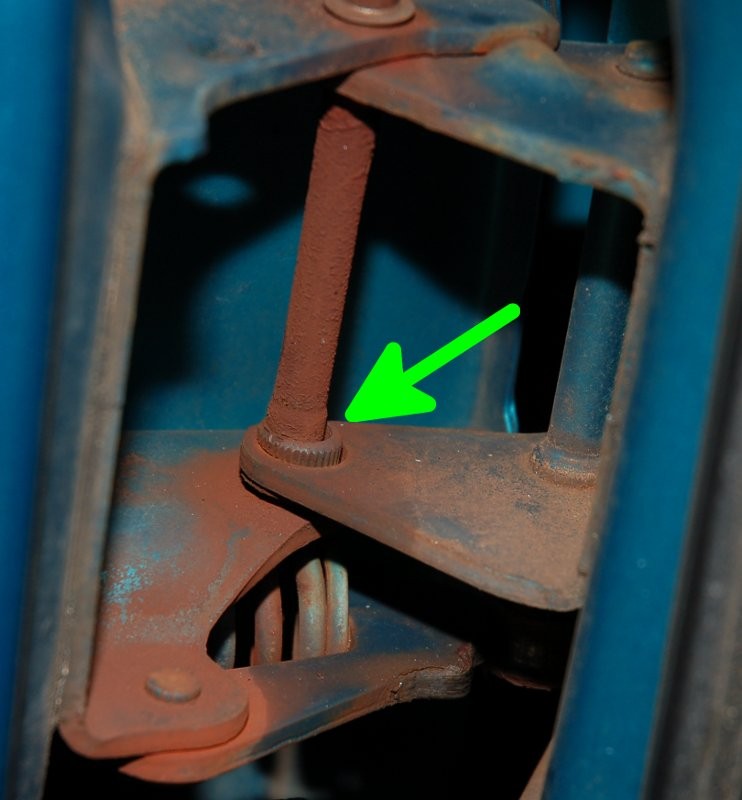 Worn door hinge bushing, indicating need for auto door hinge repair
Worn door hinge bushing, indicating need for auto door hinge repair
5. Advanced Techniques for Hinge Repair
What advanced methods can be used for more complex hinge issues?
For more complex auto door hinge issues, advanced techniques may be required. If the hinge plates are bent or damaged, they may need to be straightened or reinforced using welding techniques. This involves:
- Straightening: Using a hydraulic press or specialized tools to carefully bend the hinge plates back into their original shape.
- Welding: Reinforcing weakened areas with additional welds to add strength and prevent future damage.
- Hinge Replacement: In cases where the hinge is severely damaged or corroded, complete hinge replacement may be necessary. This involves removing the old hinge and welding a new one in its place.
Additionally, if the door frame itself is damaged, auto body repair techniques may be needed to restore the structural integrity of the door opening. This can include:
- Frame Straightening: Using specialized equipment to pull the frame back into its original alignment.
- Panel Replacement: Replacing damaged sections of the door frame with new metal.
- Body Filler: Applying body filler to smooth out any imperfections and create a seamless finish.
These advanced techniques require specialized skills and equipment. AUTO-REPAIR-TRAINING.EDU.VN offers advanced courses that cover these methods in detail, providing hands-on training to ensure you can handle even the most challenging auto door hinge repairs.
6. When to Consider Replacing the Entire Hinge
When is it more practical to replace the entire hinge rather than repairing it?
Replacing the entire hinge may be more practical in several situations. If the hinge is severely rusted or corroded, the structural integrity may be compromised, making a simple pin and bushing replacement insufficient. Similarly, if the hinge plates are significantly bent or cracked, welding and reinforcement may not provide a long-term solution. Complete hinge replacement is also advisable if the door frame itself is damaged, as this can affect the hinge alignment and overall door function. In these cases, replacing the entire hinge ensures a solid, reliable repair that restores the door to its original condition. AUTO-REPAIR-TRAINING.EDU.VN provides guidance on assessing hinge damage and determining whether replacement is the best option.
7. Choosing the Right Replacement Hinges
How do you select the correct replacement hinges for your vehicle?
Choosing the right replacement hinges involves several considerations to ensure compatibility and proper function. First, identify the make, model, and year of your vehicle. This information is crucial for finding hinges that match the original specifications. Next, determine whether you need upper or lower hinges, as they may differ in design and function. Consider the material and finish of the hinges. Opt for high-quality steel hinges with a corrosion-resistant coating to ensure durability. Finally, check the hinge dimensions and mounting points to ensure they align correctly with the door and frame. AUTO-REPAIR-TRAINING.EDU.VN offers resources and expert advice to help you select the correct replacement hinges for your vehicle, ensuring a seamless and reliable repair.
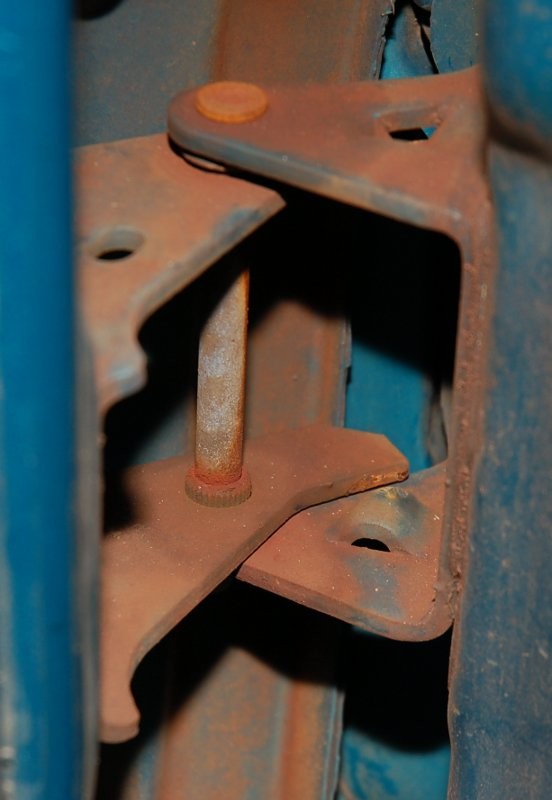 Lower hinge pin and bushing on an S10 truck, indicating need for replacement during auto door hinge repair
Lower hinge pin and bushing on an S10 truck, indicating need for replacement during auto door hinge repair
8. Potential Problems During Hinge Replacement and How to Solve Them
What challenges might you face during hinge replacement and how can you overcome them?
During auto door hinge replacement, several potential problems can arise. One common issue is difficulty removing the old hinges due to rust or corrosion. Applying penetrating oil and using heat can help loosen stubborn hinges. Another challenge is aligning the new hinges correctly. Using shims or adjusting the hinge position can ensure proper door alignment. Additionally, welding the new hinges requires precision and skill to avoid damaging the surrounding metal. Practicing welding techniques and using the right equipment can minimize this risk. AUTO-REPAIR-TRAINING.EDU.VN offers troubleshooting tips and detailed guides to help you overcome these challenges and complete the hinge replacement successfully.
9. Maintaining Your Door Hinges for Longevity
What maintenance practices can extend the life of your door hinges?
Maintaining your door hinges is essential for extending their lifespan and preventing common issues. Regularly lubricating the hinges with grease or white lithium grease can reduce friction and wear. Inspecting the hinges for signs of rust or corrosion and addressing them promptly can prevent further damage. Avoiding slamming the doors and ensuring they are properly aligned can also minimize stress on the hinges. Additionally, checking and tightening any loose bolts or screws can keep the hinges secure. AUTO-REPAIR-TRAINING.EDU.VN provides a comprehensive maintenance checklist to help you keep your door hinges in optimal condition.
10. Cost Considerations: Repair vs. Replacement
How do you weigh the cost benefits of repairing versus replacing door hinges?
When deciding whether to repair or replace door hinges, consider the cost implications of each option. Repairing hinges by replacing pins and bushings is typically less expensive than replacing the entire hinge. However, if the hinge is severely damaged or corroded, replacement may be the more cost-effective long-term solution. Factor in the cost of parts, tools, and labor when comparing the two options. Also, consider the potential for future repairs if you choose the less expensive option. AUTO-REPAIR-TRAINING.EDU.VN offers cost analysis tools and expert advice to help you make an informed decision based on your specific situation and budget.
11. The Importance of Proper Door Alignment
Why is proper door alignment crucial after hinge repair or replacement?
Proper door alignment is crucial after auto door hinge repair or replacement for several reasons. Correct alignment ensures the door closes and seals properly, preventing wind noise, water leaks, and security issues. It also reduces stress on the hinges and latch mechanism, extending their lifespan. Misaligned doors can cause wear on the door seals and body panels, leading to costly repairs. Achieving proper alignment requires careful adjustment of the hinges and latch. AUTO-REPAIR-TRAINING.EDU.VN provides detailed instructions and techniques for achieving perfect door alignment, ensuring your repair is both effective and long-lasting.
12. Safety Precautions During Door Hinge Work
What safety measures should you take when working on door hinges?
When working on auto door hinges, safety should be your top priority. Always wear safety glasses and gloves to protect your eyes and hands from injury. Use jack stands to securely support the door to prevent it from falling and causing harm. Disconnect the vehicle’s battery to avoid electrical hazards. Work in a well-ventilated area to avoid inhaling fumes from penetrating oils or welding materials. Follow all manufacturer’s instructions for tools and equipment. AUTO-REPAIR-TRAINING.EDU.VN emphasizes safety in all its training programs, providing detailed safety guidelines for every repair procedure.
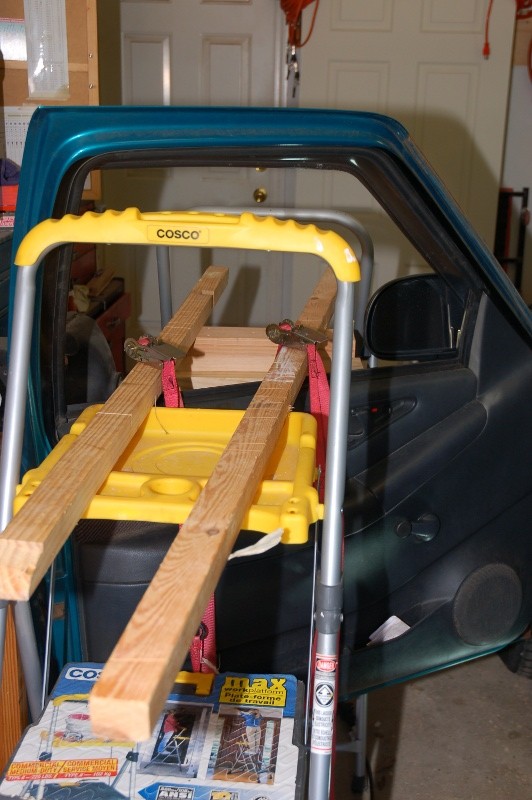 Door held neutrally with a support during auto door hinge repair, highlighting safety measures
Door held neutrally with a support during auto door hinge repair, highlighting safety measures
13. Understanding Door Hinge Adjustment Techniques
What are the methods for adjusting door hinges to achieve optimal alignment?
Adjusting door hinges is a critical step in achieving optimal door alignment after repair or replacement. Several techniques can be used, depending on the type of adjustment needed. Shimming involves placing thin metal shims behind the hinge plates to move the door in or out. Loosening the hinge bolts and gently moving the door can also help achieve the desired alignment. In some cases, specialized tools may be needed to bend the hinge plates slightly. It’s important to make small adjustments and check the alignment frequently to avoid overcorrection. AUTO-REPAIR-TRAINING.EDU.VN offers detailed tutorials and expert advice on door hinge adjustment techniques, ensuring you can achieve perfect alignment every time.
14. Lubrication Techniques for Smooth Door Operation
What are the best practices for lubricating door hinges to ensure smooth operation?
Proper lubrication is key to ensuring smooth door operation and prolonging the life of your door hinges. Use a high-quality grease or white lithium grease specifically designed for automotive applications. Apply the lubricant to all moving parts of the hinge, including the pins, bushings, and contact points. Use a small brush or applicator to ensure even coverage. Work the door back and forth to distribute the lubricant. Reapply lubricant periodically, especially after washing the vehicle or in harsh weather conditions. AUTO-REPAIR-TRAINING.EDU.VN recommends specific lubricants and provides detailed lubrication schedules to keep your door hinges operating smoothly.
15. Dealing with Rusted or Seized Hinges
How do you handle door hinges that are heavily rusted or seized?
Dealing with rusted or seized door hinges can be challenging, but several techniques can help. Start by applying penetrating oil liberally to the hinge area and let it soak for several hours or overnight. Use a wire brush to remove as much surface rust as possible. Gently tap the hinge with a hammer to help loosen the rust. If the hinge is still seized, use a torch to heat the area around the hinge, which can help break down the rust. Be careful not to overheat the metal, as this can damage the hinge. If all else fails, consider cutting off the old hinge and replacing it with a new one. AUTO-REPAIR-TRAINING.EDU.VN provides detailed guides and videos on dealing with rusted or seized hinges, ensuring you have the knowledge and skills to tackle this common problem.
16. How to Prevent Future Hinge Problems
What preventative measures can you take to avoid future door hinge issues?
Preventing future door hinge problems involves regular maintenance and care. Keep the hinges lubricated with high-quality grease to reduce friction and wear. Inspect the hinges periodically for signs of rust or damage and address them promptly. Avoid slamming the doors and ensure they are properly aligned. Check and tighten any loose bolts or screws. Consider applying a rust inhibitor to protect the hinges from corrosion. AUTO-REPAIR-TRAINING.EDU.VN offers a comprehensive maintenance checklist and expert advice to help you prevent future door hinge issues and keep your vehicle in top condition.
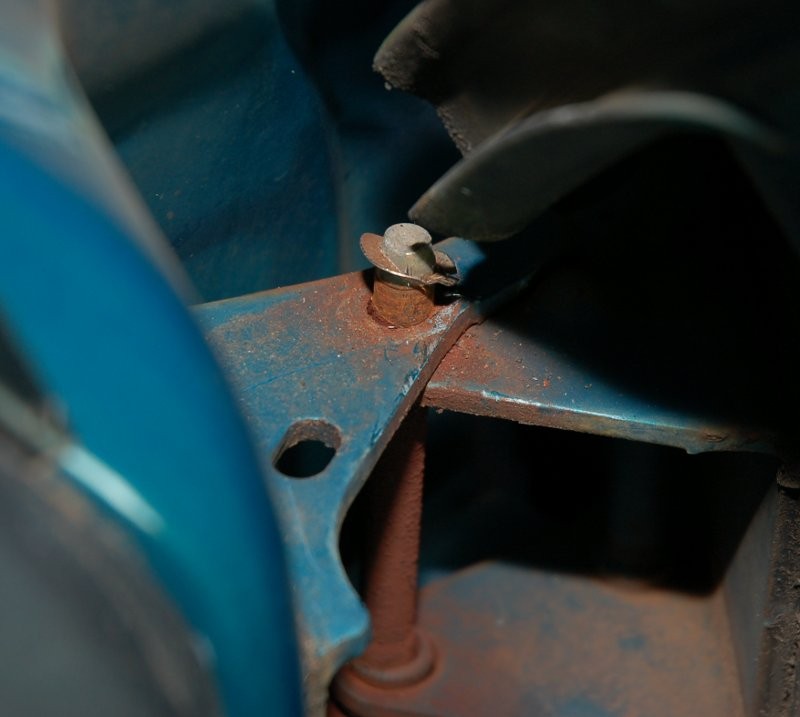 Old pins needing replacement during auto door hinge repair
Old pins needing replacement during auto door hinge repair
17. The Role of Door Checks in Hinge Longevity
How do door checks contribute to the lifespan of door hinges?
Door checks play a crucial role in the longevity of door hinges by controlling the door’s range of motion and preventing it from overextending. These mechanisms limit how far the door can swing open, reducing stress on the hinges and preventing them from being damaged. Door checks also help hold the door in place, preventing it from slamming shut or swinging freely in the wind. Maintaining the door checks and ensuring they are functioning properly can significantly extend the life of your door hinges. AUTO-REPAIR-TRAINING.EDU.VN provides guidance on inspecting and maintaining door checks to keep your door hinges in optimal condition.
18. Understanding Different Types of Door Hinges
What are the various types of door hinges and their specific applications?
Several types of door hinges are used in vehicles, each designed for specific applications. Standard hinges are the most common type, used on most car doors. Heavy-duty hinges are designed for larger, heavier doors, such as those on trucks and SUVs. Detachable hinges allow the door to be easily removed for maintenance or repair. Concealed hinges are hidden from view, providing a clean, streamlined appearance. Understanding the different types of door hinges and their specific applications can help you choose the right replacement hinges for your vehicle. AUTO-REPAIR-TRAINING.EDU.VN offers detailed information on the various types of door hinges, ensuring you have the knowledge to make informed decisions.
19. How to Evaluate Door Hinge Wear and Tear
What factors should you consider when assessing the wear and tear on door hinges?
Evaluating door hinge wear and tear involves considering several factors. Check for signs of rust or corrosion, which can weaken the hinge structure. Look for excessive play or movement in the hinge, indicating worn pins or bushings. Inspect the hinge plates for bends or cracks, which can affect door alignment. Listen for squeaking or grinding noises when the door is opened or closed. Consider the age and mileage of the vehicle, as older vehicles are more likely to have worn hinges. AUTO-REPAIR-TRAINING.EDU.VN provides a comprehensive checklist for evaluating door hinge wear and tear, helping you identify potential problems before they become major issues.
20. Using Aftermarket Hinge Repair Kits
What are the pros and cons of using aftermarket hinge repair kits?
Aftermarket hinge repair kits offer a convenient and cost-effective solution for repairing worn door hinges. These kits typically include new pins, bushings, and other necessary hardware. The pros of using these kits include their affordability and ease of installation. However, the cons include the potential for lower-quality parts and a shorter lifespan compared to OEM (Original Equipment Manufacturer) parts. When choosing an aftermarket hinge repair kit, research the brand and read reviews to ensure you are getting a quality product. AUTO-REPAIR-TRAINING.EDU.VN provides expert advice on selecting and using aftermarket hinge repair kits, helping you make an informed decision based on your needs and budget.
21. The Impact of Door Weight on Hinge Stress
How does the weight of the door affect the stress on the hinges?
The weight of the door has a significant impact on the stress placed on the hinges. Heavier doors, such as those on trucks and SUVs, exert more force on the hinges, leading to increased wear and tear. Over time, this can cause the hinges to sag, loosen, or fail. To mitigate this stress, use heavy-duty hinges designed for the specific weight of the door. Regularly lubricate the hinges and inspect them for signs of wear. Avoid adding extra weight to the door, such as heavy soundproofing materials, which can exacerbate the problem. AUTO-REPAIR-TRAINING.EDU.VN offers guidance on selecting the right hinges for your vehicle and managing door weight to minimize hinge stress.
22. The Significance of Hinge Placement and Angle
Why are hinge placement and angle important for door function?
Hinge placement and angle are critical for proper door function. Incorrect placement or angle can cause the door to bind, sag, or not close properly. The hinges must be aligned correctly with the door frame to ensure smooth operation. The angle of the hinges affects the door’s swing arc and how it aligns with the latch mechanism. Achieving the correct hinge placement and angle requires careful measurement and adjustment. AUTO-REPAIR-TRAINING.EDU.VN provides detailed instructions and techniques for ensuring proper hinge placement and angle, ensuring your door functions seamlessly.
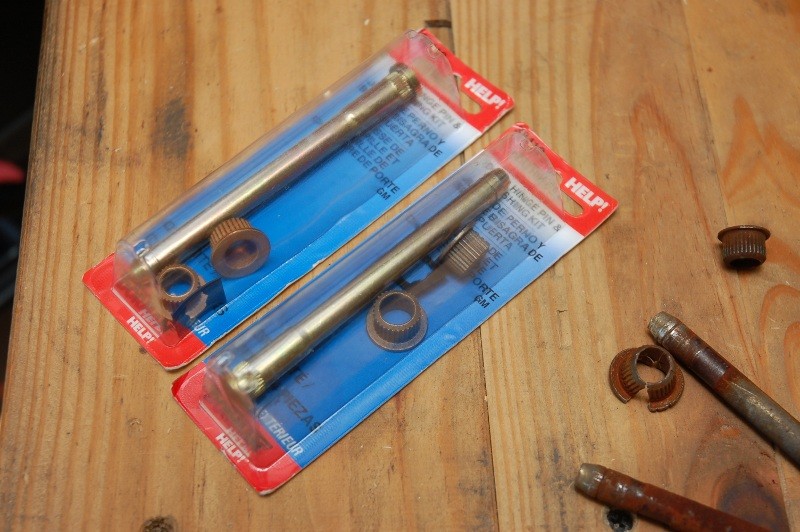 New pins and bushings ready for installation during auto door hinge repair
New pins and bushings ready for installation during auto door hinge repair
23. Diagnosing and Repairing Door Latch Misalignment
How do you diagnose and fix door latch misalignment issues?
Door latch misalignment can cause the door to be difficult to close or latch properly. To diagnose this issue, inspect the alignment of the latch and striker plate. Check for any signs of wear or damage on the latch components. Adjust the position of the striker plate to align it with the latch. In some cases, the latch mechanism itself may need to be replaced. Ensuring proper door alignment and hinge function is essential for resolving latch misalignment issues. AUTO-REPAIR-TRAINING.EDU.VN offers troubleshooting tips and detailed guides on diagnosing and repairing door latch misalignment, ensuring your door closes securely.
24. Techniques for Welding New Hinges
What are the best practices for welding new hinges onto a vehicle?
Welding new hinges onto a vehicle requires precision and skill to ensure a strong, reliable repair. First, remove the old hinges and clean the welding area thoroughly. Position the new hinges in the correct location and secure them in place. Use a MIG (Metal Inert Gas) welder to weld the hinges to the door and frame, using multiple passes to build up a strong weld. Be careful not to overheat the metal, as this can cause distortion. After welding, grind down any excess weld material and apply a rust-resistant coating. Practicing welding techniques and using the right equipment are essential for a successful hinge replacement. AUTO-REPAIR-TRAINING.EDU.VN offers advanced courses that cover these methods in detail, providing hands-on training to ensure you can handle even the most challenging auto door hinge repairs.
25. The Impact of Environmental Factors on Hinge Durability
How do environmental conditions affect the durability of door hinges?
Environmental conditions can significantly impact the durability of door hinges. Exposure to moisture, salt, and extreme temperatures can accelerate rust and corrosion. In coastal areas or regions with harsh winters, door hinges are particularly vulnerable to damage. Regularly cleaning and lubricating the hinges can help protect them from these elements. Applying a rust inhibitor can also provide an extra layer of protection. AUTO-REPAIR-TRAINING.EDU.VN provides tips and advice on protecting your door hinges from environmental factors, helping you extend their lifespan and maintain your vehicle’s overall condition.
26. Common Mistakes to Avoid During Hinge Repair
What are some common mistakes to avoid when repairing door hinges?
Several common mistakes can undermine the success of a door hinge repair. Neglecting to support the door properly can lead to misalignment and further damage. Using the wrong tools or techniques can damage the hinges or surrounding metal. Failing to clean the hinge area thoroughly can prevent proper adhesion. Over-tightening the hinge bolts can strip the threads. Rushing the repair process can result in errors and compromised quality. AUTO-REPAIR-TRAINING.EDU.VN emphasizes precision and attention to detail in all its training programs, providing guidance on avoiding these common mistakes and ensuring a successful repair.
27. Upgrading to Heavy-Duty Hinges for Added Support
When is it beneficial to upgrade to heavy-duty door hinges?
Upgrading to heavy-duty door hinges can be beneficial in several situations. If you frequently carry heavy loads in your vehicle or have oversized doors, heavy-duty hinges can provide added support and prevent sagging. If you live in an area with harsh weather conditions or frequently drive on rough roads, heavy-duty hinges can withstand the extra stress and provide longer-lasting performance. If you are restoring a classic vehicle and want to improve its durability, upgrading to heavy-duty hinges can be a worthwhile investment. AUTO-REPAIR-TRAINING.EDU.VN offers expert advice on selecting and installing heavy-duty door hinges, ensuring you get the right hinges for your needs.
28. The Future of Auto Door Hinge Technology
What are the emerging trends in auto door hinge technology?
The future of auto door hinge technology is focused on improving durability, reducing weight, and enhancing functionality. Manufacturers are exploring new materials, such as lightweight alloys and composite materials, to reduce the weight of door hinges while maintaining their strength. Advanced designs, such as multi-link hinges and integrated damping systems, are being developed to improve door operation and reduce noise. Smart hinges with integrated sensors are also being explored, which can provide data on door usage and detect potential problems. AUTO-REPAIR-TRAINING.EDU.VN stays up-to-date on the latest trends in auto door hinge technology, ensuring our training programs are current and relevant.
29. Finding Reliable Auto Repair Training Programs
How can you find reliable auto repair training programs that cover hinge repair?
Finding reliable auto repair training programs that cover hinge repair involves researching and evaluating different options. Look for programs that are accredited by reputable organizations, such as the ASE (Automotive Service Excellence). Check the curriculum to ensure it covers hinge repair and other relevant topics. Consider the experience and qualifications of the instructors. Read reviews from past students to get an idea of the program’s quality. Visit the training facility to see the equipment and resources available. AUTO-REPAIR-TRAINING.EDU.VN offers comprehensive auto repair training programs that cover hinge repair and other essential skills, providing students with the knowledge and hands-on experience they need to succeed in the automotive industry. Our programs are designed to meet the highest standards of quality and relevance, ensuring our graduates are well-prepared for their careers.
AUTO-REPAIR-TRAINING.EDU.VN is your ultimate resource for mastering auto door hinge repair and advancing your automotive career. Contact us today at +1 (641) 206-8880 or visit our office at 200 N Michigan Ave, Suite 1500, Chicago, IL 60601, United States, to explore our comprehensive training programs. Whether you’re looking to refine your skills or start a new career, we offer the guidance and support you need to succeed. Don’t wait—discover how AUTO-REPAIR-TRAINING.EDU.VN can transform your future!
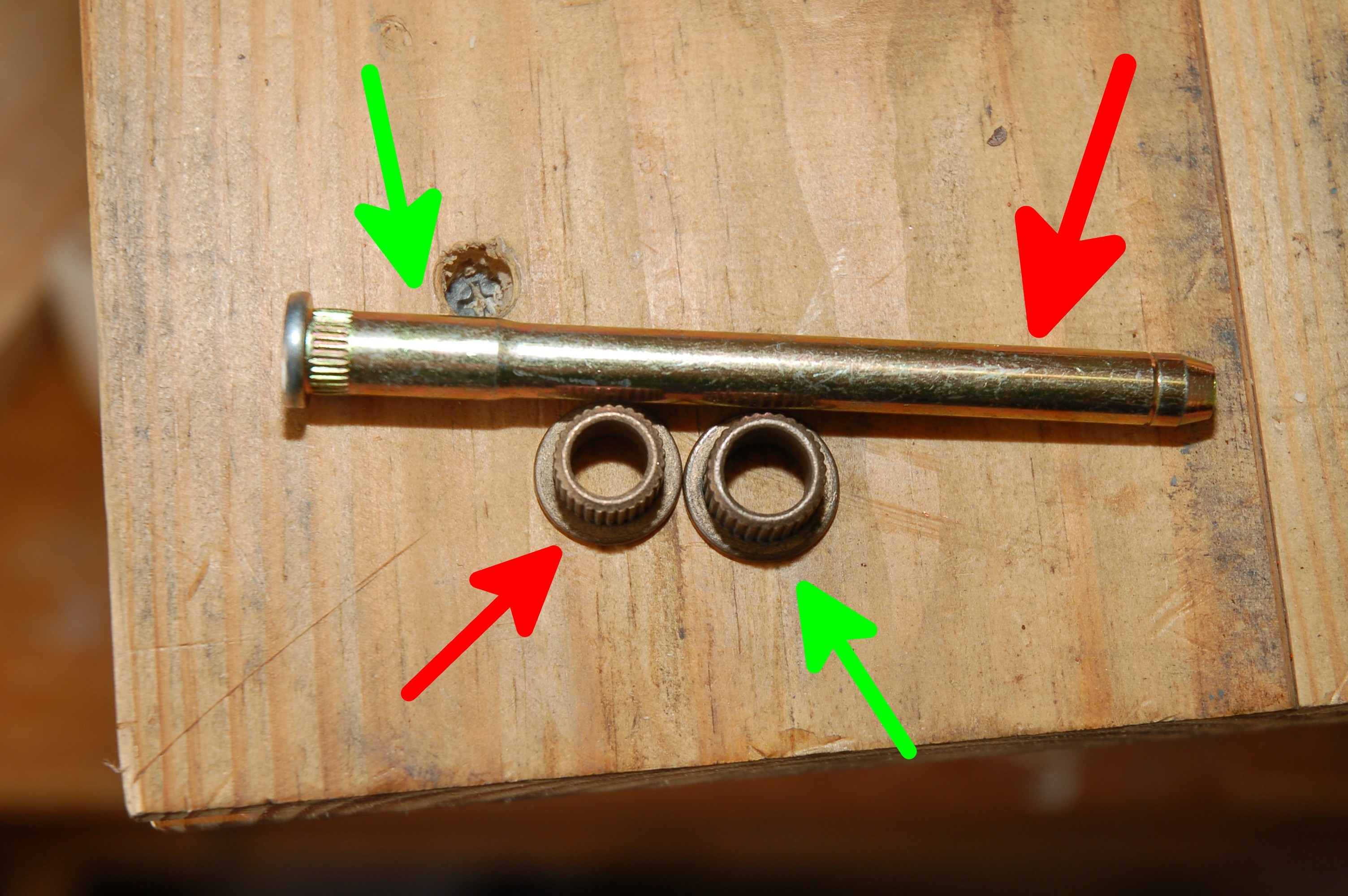 Diagram showing different sized bushings for auto door hinge repair
Diagram showing different sized bushings for auto door hinge repair
30. FAQ on Auto Door Hinge Repair
Here are some frequently asked questions about auto door hinge repair:
Q1: How do I know if my car door hinge needs repair?
A1: Common signs include a sagging door, difficulty opening or closing the door, squeaking noises, and visible rust or corrosion on the hinges.
Q2: Is it better to repair or replace a damaged door hinge?
A2: Repairing hinges by replacing pins and bushings is often less expensive, but if the hinge is severely damaged, replacement may be more cost-effective in the long run.
Q3: Can I repair a door hinge myself, or should I hire a professional?
A3: If you have experience with auto repair and have the necessary tools, you can repair a door hinge yourself. However, if you are not comfortable with the process, it is best to hire a professional.
Q4: How much does it cost to repair a car door hinge?
A4: The cost to repair a car door hinge varies depending on the extent of the damage and whether you hire a professional or do it yourself. Generally, expect to pay between $50 and $200 for parts and labor.
Q5: What tools do I need to repair a car door hinge?
A5: Essential tools include new hinge pins and bushings, penetrating oil, a hammer, a pin punch set, a socket set/wrenches, grease, jack and support stands, safety glasses, and gloves.
Q6: How long does it take to repair a car door hinge?
A6: The time it takes to repair a car door hinge depends on the extent of the damage and your experience level. Generally, it takes between 1 and 3 hours to complete the repair.
Q7: What are the common problems encountered during hinge replacement?
A7: Common problems include difficulty removing old hinges due to rust, aligning the new hinges correctly, and welding the new hinges without damaging the surrounding metal.
Q8: How can I prevent future hinge problems?
A8: Regular maintenance, including lubricating the hinges, inspecting for rust, avoiding slamming the doors, and ensuring proper alignment, can help prevent future hinge problems.
Q9: What type of grease should I use to lubricate door hinges?
A9: Use a high-quality grease or white lithium grease specifically designed for automotive applications.
Q10: Are aftermarket hinge repair kits reliable?
A10: Aftermarket hinge repair kits can be reliable if you choose a quality brand and follow the installation instructions carefully. However, OEM parts are generally more durable and longer-lasting.
We at AUTO-REPAIR-TRAINING.EDU.VN are committed to helping you improve your auto door hinge repair knowledge and skills. Contact us today to learn more about our training programs and how we can help you achieve your goals. Our office is located at 200 N Michigan Ave, Suite 1500, Chicago, IL 60601, United States, and our Whatsapp number is +1 (641) 206-8880.